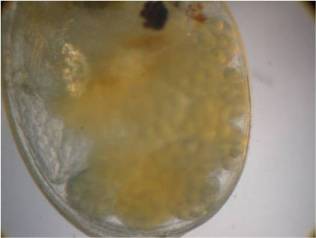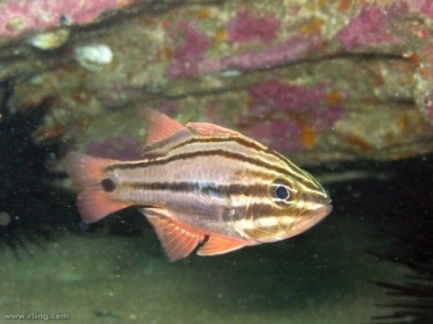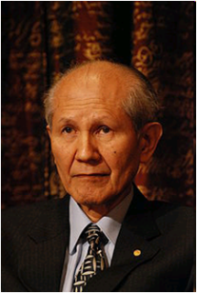Interactions
As mentioned on the
Nutrition page, Photeros annecohenae is a victim of parasitism. It
serves as a host for copepods, an ectoparasite in the family
Nicothoidae, which reside in the valves of its carapace (Cohen
and Morin 2010). These parasites are also crustaceans. The copepods consume the female ostracod's eggs
in the brood pouch and replace them with their own. The female
ostracod releases these eggs into the environment when it comes
time for her to release what she thinks are her juveniles. The parasite is the most common cause of mortality in
Photeros annecohenae (Gerrish Personal Communication).
Photeros annecohenae is a victim of parasitism. It
serves as a host for copepods, an ectoparasite in the family
Nicothoidae, which reside in the valves of its carapace (Cohen
and Morin 2010). These parasites are also crustaceans. The copepods consume the female ostracod's eggs
in the brood pouch and replace them with their own. The female
ostracod releases these eggs into the environment when it comes
time for her to release what she thinks are her juveniles. The parasite is the most common cause of mortality in
Photeros annecohenae (Gerrish Personal Communication).
 Ostracods are a component of marine plankton
and are,
therefore, prey for planktivorous fish and invertebrates. Because of
this, they fall considerably low on the food chain with other
"marine plankton species." Their main predator is
the Cardinalfish. Ostracods do not
interact with other species as fierce predators due to the fact
that they are scavengers and feed off of dead and decaying
organisms.
Ostracods are a component of marine plankton
and are,
therefore, prey for planktivorous fish and invertebrates. Because of
this, they fall considerably low on the food chain with other
"marine plankton species." Their main predator is
the Cardinalfish. Ostracods do not
interact with other species as fierce predators due to the fact
that they are scavengers and feed off of dead and decaying
organisms.
Skogsbergia lerneri, a nonbioluminescent
ostracod that lives in the same habitat as Photeros
annecohenae, is the bioluminescent ostracod's biggest
competitor. This competition is indirect: the two species do not
directly compete with each other, but they feed on the same
material. Skogsbergia lerneri, forages
during the day, while Photeros annecohenae does so at
night. Other organisms that live in the same habitat as
Photeros annecohenae include other bioluminescent organisms
(the luminescent syllid polychaete worm and bioluminescent
dinoflagellates) as
 well
as sea urchins (of the genus Diadema) and manatee and turtle
grass.
Photeros annecohenae does not directly interact with these
species physiologically, but they can affect its life. Examples
include the bioluminescent organisms acting as distractions to
females during mating displays and the turtle grass (Thalassia testudinalis)
providing a place for Photeros annecohenae to live.
well
as sea urchins (of the genus Diadema) and manatee and turtle
grass.
Photeros annecohenae does not directly interact with these
species physiologically, but they can affect its life. Examples
include the bioluminescent organisms acting as distractions to
females during mating displays and the turtle grass (Thalassia testudinalis)
providing a place for Photeros annecohenae to live.
As scavengers, ostracods serve an important role in
their environment: They decompose and recycle decaying animal
matter. This means that the organic matter, and essential
nutrients, are no longer "tied
up" in the dead animals and can be recycled back to the soil for
use by other organims. It can be assumed that Photeros
annecohenae are able to find and consume plenty of food due to
the large densities they may be found in.

Although there are no known direct ties to medicinal
use of bioluminescent ostracods, there has been discussion of
using the bioluminescent chemicals, protein luciferin and enzyme
luciferase, as DNA labels. Some of the researchers who first
isolated GFP (green fluorescent protein) from a jellyfish, which
is commonly used in scientific research, work on the ostracod
luminescent system. In fact, the 2008 Nobel Peace Prize in
Chemistry went to Shimomura Osamu, an organic chemist and marine
biologist who first discovered GFP in jellyfish; his
 work on
bioluminescent ostracods is what actually spurred his research
on green fluorescent proteins in jellyfish, and, therefore, lead
to the isolation of GFP. Bioluminescent compounds have also been
found to be strong antioxidants.
work on
bioluminescent ostracods is what actually spurred his research
on green fluorescent proteins in jellyfish, and, therefore, lead
to the isolation of GFP. Bioluminescent compounds have also been
found to be strong antioxidants.
There are not many known human uses for ostracods;
however, there are stories of Asian explorers of the past who dried ostracods and put the
organism in their salads (Gerrish Personal Communication)! Yum!
To read more interesting facts about ostracods, click
here to be guided to a page dedicated to
these fun facts!
